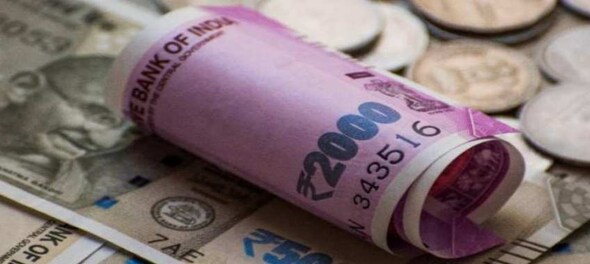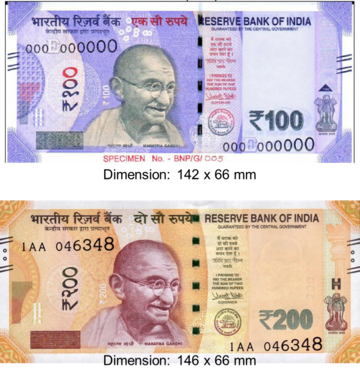
The measure of an inclusive civil society is the way it embraces its marginalised members; be it they come from different socio-economic divides or access to societal tools that could offer them better quality living. A truly inclusive society also works over time and with additional accountability in wanting to empower all of its society, especially those who are “weak” or “disadvantaged” from any quarter.
Have you ever thought of how a visually impaired person accesses mainstream banking services, ATMs, and how they handle currency notes and coins in their daily lives? Have you wondered how difficult it could be to access a simple service like updating one’s bank account passbook? What happens if there are new currency notes and coins issued in circulation?
Currency and confusion
In India, Cash is King. Since March 2020, the cash in circulation has reached Rs 26.9 lakh crores—representing a 10 percent rise from the beginning of the pandemic. The simplicity of use, the speed of transactions and the universal acceptability of cash have made it the preferred mode of payment. However, for over 6.2 crore Indians living with a visual disability, cash–currency notes and coins presently in circulation in India are creating a barrier to independently conducting transactions.
Take Priya, for example, who lives with blindness and often faces difficulty in distinguishing between currency notes. Just this week, she erroneously gave away Rs 200 note instead of Rs 100 when buying chocolate for her 10-year-old. The nearly uniform size and shape of the Mahatma Gandhi (New) series banknotes regularly frustrates Priya and others like her. For instance, the dimension of the Rs 100 note is 142 x 66 mm while that of the Rs 200 is 146 x 66 mm—a difference of a mere 4 mm in length.
Members of the visually disabled community recommend a minimum difference of 10 mm in length and breadth of banknotes of different denominations to facilitate their identification. The size and dimensions of the banknotes become important because of their lasting nature. Other features, such as tactile markings become ineffective with time due to repeated handling and general wear and tear.

In addition to the change in size, some other features from the old Mahatma Gandhi series are missing in the new notes. As an example, the large size of a denomination which is important for people living with low vision or partial sight has been abandoned in the new design.

The various changes have caused huge economic hardship for the blind and low vision community. Additionally, the presence of both series of notes creates confusion amongst these individuals. In 2019, The National Association for the Blind and Blind Graduate Forum of India had filed PILs in the Mumbai and Delhi High Courts to make currency notes accessible (easily identifiable).
Best practices from around the world
In other countries, the currency regulators have used “currency design” as a “differentiator to bring in inclusion”. In Australia, each currency denomination has a different length and width.
The Canadian currency has “currency tactile dots” in the currency itself. The feature indicates the banknote denomination in the upper left corner of the face side of the bill using a series of raised dots. It was suggested by Bruno Thériault, an administrator for the Canadian National Institute for the Blind and designed by Susan Lederman, professor at Queen’s University. Although similar in appearance to Braille, it uses full braille blocks (or cells) of 6 dots, ⟨⠿⟩. The $5 bill has one cell, with the $10, $20, and $50 denominations each having one more cell than the previous. The $100 bill has two cells arranged such that there is a space of two empty cells between them.
Mr. Money’s Mani:
In January 2020, the RBI launched the “Mobile Aided Note Identifier (MANI)”, a free-to-use mobile application for aiding persons living with a visual disability in identifying the denomination of Indian banknotes. It is expected to recognise various denominations from both the old and new Mahatma Gandhi series in various lighting conditions. It also boasts of providing audio and haptic feedback to announce the denomination along with voice control capabilities.
However, users have complained of faulty recognition suggesting further scope for improvement. The app also requires one to hold individual banknotes at a time for recognition which is time-consuming making the app unsuitable for day-to-day transactions. Additionally, the app requires one to use a smartphone—a privilege that may not be available to all blind and low vision citizens, especially in smaller towns and villages.
Digital transactions (hopes and disappointments)
The government’s push towards digital transactions holds immense potential for improving accessibility for persons living with visual disabilities. Recent projections suggest that by 2025, digital transactions will account for 71 percent of all transactions by volume in the country. This further opens up the potential to use technology to overcome the inaccessibility of paper banknotes. However, for this, India needs to give active attention to the accessibility of digital transactions today.
Currently, many payment apps and wallets are not usable for persons living with visual disabilities. This is because, these apps often fail to ensure that they work with the assistive technologies, such as screen readers, essential for these users. This represents a massive lost opportunity. This failure risks perpetuating the exclusion of this community from digital commerce, an outcome that will be unhealthy for our economy.
Need for sensitivity and urgent action
On July 15, 2010, India entered an elite club by issuing the ‘₹’ symbol for the Indian Rupee. The symbol represented the strength of the economy and an aim to reduce economic disparity. The move was yet another mark of India’s desire to continue making our society more inclusive.
On the 11th anniversary of announcing the ‘₹’ symbol, can RBI speed up its march towards a more inclusive India by working with the blind and low-vision community to improve the accessibility of banknotes, coins and digital transactions? Will it seize the opportunity to empower the community to live with dignity and unlocking their full potential?
—The authors, Srinath Sridharan is Corporate Advisor & Independent markets commentator; Apoorv Kulkarni, Head of Accessibility & Inclusion track, Ola Mobility Institute. Views expressed are personal
(Edited by : Ajay Vaishnav)
First Published: Jul 15, 2021 7:23 PM IST
Check out our in-depth Market Coverage, Business News & get real-time Stock Market Updates on CNBC-TV18. Also, Watch our channels CNBC-TV18, CNBC Awaaz and CNBC Bajar Live on-the-go!


Telangana CM violated poll code, defer Rythu Bharosa payment, says Election Commission
May 7, 2024 9:01 PM
Lok Sabha Election 2024: How Indian political parties are leveraging AI
May 7, 2024 6:59 PM

